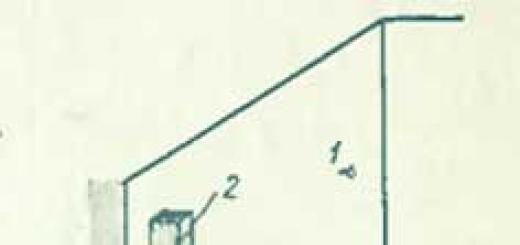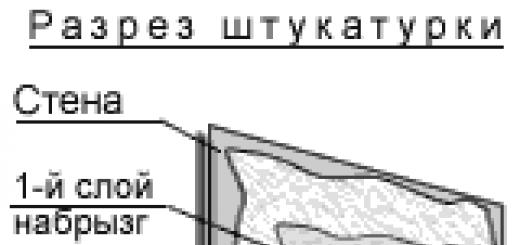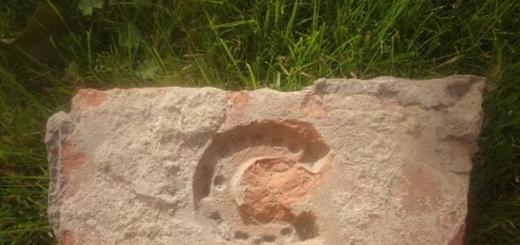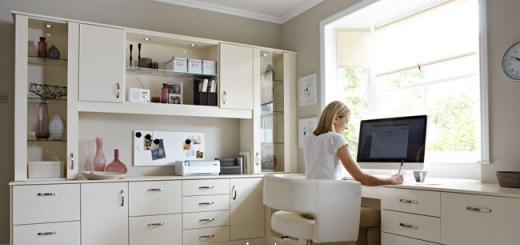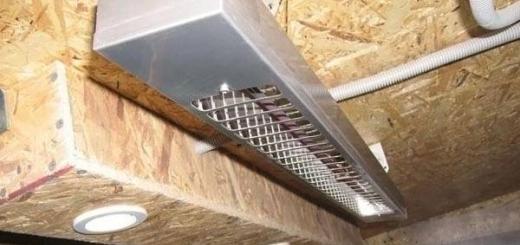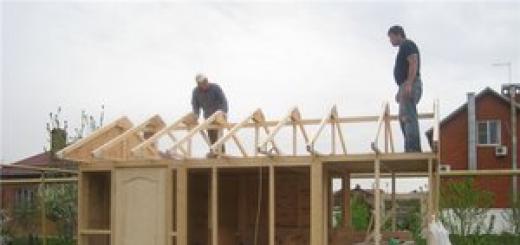One of the main differences between the frame version and buildings made of brick or foam block is the minimum time required to complete the work. After a few weeks, a beautiful and comfortable building with utilities appears on the site.
5x6 frame houses are assembled by teams of experienced craftsmen in several stages:
- arrangement of the foundation;
- assembly of the frame from environmentally friendly material;
- construction of the roof, as well as installation of floors;
- insulation of the resulting structure with modern materials;
- interior decoration of the house and introduction of all necessary communications inside.
Each project completed by us was carefully studied and checked for compliance with the requirements of regulatory documents. The Gradodel company is responsible for product quality and provides a long-term guarantee. Our homes are always warm, cozy and comfortable.
Advantages of 5x6 houses
It is not always the size of the plot and the financial capabilities of the owner that allow the implementation of a large-scale project and the construction of a large house. In such cases, the construction of a frame structure makes it possible to obtain inexpensive and high-quality housing with a minimum occupied site area. The equipment may vary and depends on the client’s preferences.
The main advantages of our designs are:
- environmental cleanliness and safety for human health;
- low cost, which compares favorably with the price of other types of houses;
- excellent heat, sound and waterproofing characteristics;
- special processing of materials used in construction. The houses we produce have good fire protection characteristics and are not afraid of mold and mildew;
- to build a house, a deep foundation is not required, since the building has a small mass;
- the duration of any project does not exceed several weeks;
- It is possible to order both standard and individual designs.
The benefits of frame houses have been appreciated by many residents of various regions of the country. The buildings are suitable for living in different climatic zones, have a convenient layout and excellent design. For a small family, such a house will be an excellent place to relax and live outdoors.
You can order any of the designs you like on the website of the Gradodel enterprise. Our staff will also accept your application over the phone and talk about the advantages of each option. By contacting us, each customer can count on an affordable cost and minimal construction time for a house. The quality of work is not satisfactory, as are the characteristics of the finished product.
READ ALSO: How to build a miniature gazebo using 19 pallets
READ ALSO: 33 Unique Fence Ideas. Creating an oasis of privacy
READ ALSO: Holiday home in Gotland, Sweden
READ ALSO: Cozy house by the lake
READ ALSO: Simple and modern house in Slovakia. 18 Photos
Tiny mobile homes are actually becoming more popular every day. It's time to take a look at some examples of tiny home designs. And as a bonus, we have prepared for you 5 house projects, which you can build yourself. Enjoy...
1. Let's look at a tiny house built from household materials.
It is a wooden structure made from sections of an old washing machine, discarded kitchen cabinets and pallets. A section of the washing machine became a window, and the roof of the house was made of transparent plastic. The house area is 2.2 square meters and other options can be made according to the requirements of each client. This house was made by Gypsy Junker in his own backyard for just $200.






2. Transforming A-frame house is our second idea.
First of all, this building costs $1200, at the end of the article you can download a project of such a house and build it yourself. The main idea behind this design is to make something that is easy and quick to build and can serve a variety of purposes. The original design features 7.4 square meters of living space. One wall of the house is raised and can be turned into a porch with mosquito netting, thereby increasing the area. There is enough space inside for a bed, kitchen and storage.



3. "Nido", this tiny house was built in Finland by Robin Falk.
The windows overlook the beautiful lake and stunning surroundings. Although it measures only 8.9 square meters, the house is not as tiny as it may seem. It was built using a variety of recycled materials and the entire project cost around $10,500. The bedroom is on the top floor, and on the ground floor there is a living room with a small sofa and a couple of chairs. The veranda is ideal for enjoying the outdoor views.



4. Designer Kristina Hristova decided to create a stylish holiday home on wheels that would allow the owner to travel around the continent.
The tiny houses we've featured so far are generally intended to be used as temporary shelters or getaways from industrial cities. This modern micro house has an area of 9 square meters and its main advantage is wheels.





6. Projects such as Tengbom show that homes can be affordable.
The architects came up with a concept specifically for students. The minimal house, with an area of 10 square meters, is affordable and very functional, in addition to being environmentally friendly. Inside this cute structure there is a kitchen, a table that can also be used as a desk, a bathroom, a sleeping area and even a sitting area with an armchair.




6. Next on our list of tiny houses is this cozy mini studio in Paris.
The area of 12 square meters has a bathroom hidden behind a perforated screen, a small kitchen with storage and a comfortable sleeping area. The beds can be hidden under the platform to create a living area with a small sofa. Despite its small size, the interior has a large number of smart functions.





7. In Wroclaw, Poland there is this tiny apartment with an area of 13 square meters.
This is not enough space for most people, but designer Shimona Hanzkar did not lose heart and took it as a challenge. The apartment has all the important features. A small kitchen, a dining table, a sleeping place, a spacious closet, a bathroom and even a comfortable hammock and bicycle rack.




8. The project is called “Perspective”. A compact van of 10 square meters, trimmed with natural wood and alloy steel.
Inside there is a bedroom, a living room with a kitchen and a combined bathroom. The “Perspective” project was conceived as a private space that will allow you to be alone with nature. Huge windows on three sides provide a panoramic view, you will definitely feel like a part of nature. This is an excellent mobile home for travelers who love to see the world from the windows of their home. The cost of such a van in the USA is $39,900. This is certainly a lot for residents of the CIS. But why not take advantage of the ideas from the finished product and make a similar mobile home yourself? Anything is possible, my friends.






9. 14.8 square meters - the area that this tiny house on wheels has, built within "tiny project less house more life".
This mobile home has a modern look and beautiful design. 10 windows and a glass door allow sunlight to penetrate every corner of the house. Inside there is a work area with a desk, a folding table, a loft bed with drawers for clothes, a small kitchenette, a bathroom and a sitting area. There's plenty of room for upgrading as the design is simple, modern and flexible enough for innovation.





10. This tiny apartment in Seattle was built by engineer Steve Sauer.


11. The largest size for tiny houses and apartments is 17 square meters. The house was built from an old ship's cabin and is located in Canada.



12. The second project, with an area of 17 square meters, is called Pod Idladla.
This is a prefabricated tiny house that can adapt to different needs. Each space serves two or more functions. The standard model has a veranda that enhances the lines of the house. The bedroom is accessed by a vertical staircase, while downstairs there is a kitchen and ample storage space.



13. One-story country house with an attic and attic.

14. Wooden two-story prefabricated country house.

15. Small one-story country house.

16. Simple prefabricated holiday home from a shipping container. Read also - 20 Houses made from shipping containers.

A one-story house with an area of 5 by 6 meters can become a full-fledged permanent home for a small family or a young couple, as well as a cozy holiday home. Buildings of this size are often chosen by owners of recreation centers to rent out guest houses. In a building of 30 sq. m. a small store can easily fit.
But how to build a house of such a size that it would be comfortable and pleasant to live in? How to arrange furniture and plan the layout of rooms? How to increase usable space physically and visually?

We will try to answer these and many other questions in this article. Let's start with why people are increasingly choosing small-sized houses, and consider their advantages.





Advantages of small houses
Economical. Construction of a 5x6 house does not require large expenses for building materials, finishing and hired labor. A building of this size can be completed by 1-2 people. And you can save a lot on the operation and maintenance of a small house.

Construction speed. In good summer weather, such a building can be erected in 8-10 days.

The minimum occupied area is especially important for owners of small plots of land, as well as for those who already have a main house on the site, and a new one is being built as a guest house.

A small area is much easier to keep clean and tidy than a large cottage.












The heating costs of such houses are minimal, since they warm up quickly, retain heat for a long time and do not require a separate room for the boiler.

A large number of layout options allows you to adjust the living space to the specific needs of the owners.

Planning solutions for houses 5x6m
An important part of building on a small plot of land is the layout of the house. A carefully thought-out project allows you to increase the usable space and make the most of it for comfortable rest or work.

With rational use of space, a 5 x 6 house can accommodate separate rooms, a bathroom, a kitchen, and even a dressing room or steam room, and the attached terrace can become an additional place to relax.

When using the premises as non-residential, you can equip it for a grocery or industrial store with a warehouse, a sales area and a bathroom, as well as a small cafe with a room with several tables and a bar counter.

Principles that should be followed when planning such houses.

- Most of the space of the house should be allocated to living areas;
- Non-main rooms, such as a hallway or storage room, should occupy the smallest possible area;
- The bathroom and toilet should be combined;
- It is better to combine the kitchen area with the dining and living areas; a kitchen separated by a wall significantly reduces the space both visually and physically;
- To avoid having to allocate a separate room for the heating boiler, it is recommended to choose a compact wall-mounted option that can be hung in the kitchen or bathroom.

High cabinets, shelves and mezzanines should be allocated for storing things in order to make maximum use of the vertical space.

Folding furniture would be an excellent choice; corner versions of kitchen units or sofas are also suitable; they will occupy corners that, as a rule, are not used rationally.

The small area of the building does not mean that it is not comfortable to relax and live in it. A competent design of a 5 by 6 house will ensure a comfortable stay in the house for the owners and their guests.



How to increase the living area of 5x6m houses
Any owner sooner or later thinks about expanding the living space; of course, it is better to take care of this at the construction planning stage. If the house is being built for permanent residence, this problem becomes more acute. Among the ways to increase the number of square meters, the following should be highlighted:









If you take care of the presence of a basement in advance, its space can be used not only as a cellar, but also as a gym, workshop, library or office.

The simplest, but also more expensive way to increase the usable area of a 5x6 private house is to build a second floor. It is most often used for sleeping quarters. But this method requires more construction and finishing materials, as well as a more reliable foundation.



Use of the terrace as a kitchen or dining room. This method requires insulating and glazing the terrace.

Attic. Very often it is used as a second floor in small private houses. In order to install an attic roof, you will need a little more building materials, but this will slightly increase the cost of the house. In addition to the bedroom, you can place a children's playroom in the attic, because children love to play in the attic.






If you want to arrange a classic gable roof, then you can place sleeping places under it. To do this, during construction it is necessary to build a reliable platform under the roof. This method will reduce the height of the ceilings, but will make the most of the vertical space and save horizontal space without placing beds on it.

Another roof option that will increase the area of the house is a pitched roof. The walls of such a roof are of different heights; near a higher wall, you can build a small platform on supports. A staircase is attached to the landing, and it can be used in different ways, such as a bedroom, a workplace, a dressing room.










The above methods will effectively increase your living space without significant costs, but you need to take care of them in advance. After the house is built, the usable space can only be increased by glazing the terrace or adding additional buildings to the house.



Methods for visually expanding space
The design of a private house is the culmination and one of the important components of the entire construction. After designing and planning the house, it is worth carefully working out a design project that will highlight the architectural features and allow you to visually expand the space. Professional designers have special techniques in their arsenal to visually increase the area in houses of 5 by 6 m. Here are some of them:

Avoid using dark and bright colors for walls, ceilings and floors. Pastel shades will make the room lighter and wider. Do not use wallpaper or tiles with large patterns or designs.












To delimit space, you should not use solid walls. Separate the dining room from the kitchen with a light screen, and the hallway from the living room with a shelving unit.

One style in the design of the entire house will unite the interior and make the space more cohesive.






It is better to replace one light source with several located at different heights. For example, a floor lamp, wall sconces and ceiling lamps.

A well-known technique for visually enlarging space is mirrors. Choose cabinets or doors with mirror inserts, or just a large mirror.




Country house projects from the construction company Mir Dach. Noisy city life eventually begins to tire you with its dynamism and speed. But not everyone has the opportunity to go on vacation abroad or at least to their native sea coast. And, to be honest, modern city dwellers rarely find a minute even to go to a barbecue in the nearest forest or to a lake with their children. Therefore, for many, a small country garden house becomes a real panacea from the hustle and bustle of the metropolis.
Many of us have more than once looked longingly at country houses, photos of which can be found on the pages of fashion magazines or on the Internet, and dreamed of getting this little piece of country happiness for ourselves. But there is an opinion that no matter how attractive the country houses of which you looked at the photos may be, reality hits you hard, preventing you from achieving what you want. Although these are just excuses, in fact, modern construction companies have long been offering fairly budget-friendly country house projects designed for middle-income people.
Free drawings and photos of country house projects you can look at the company's website. It would seem, why contact a construction company to build country houses, photo projects, which can be easily found on the Internet, and even pay fabulous sums for it. You can download the desired project or program for its development yourself, plan the construction and hire a team of cheap, low-skilled builders. Of course, in the end, you will receive your own country house for permanent residence. But the question is what quality will this construction be and how much money will you have to spend on materials purchased based on advice from the Internet or from a nearby foreman. Therefore, it is better, after all, not to tempt fate and build a turnkey country house.
What are the advantages of country houses whose projects are developed by specialized companies with a full staff of qualified employees?
- During the development of the project, both the wishes of the future owner of the house and the technical recommendations of a specialist are taken into account. Thus, you can be sure that the end result will not only be a beautiful country house for which you approved the design, but also properly installed communications, a reliable foundation, etc.
- Speed of construction. Firms that have been in the construction services market for a long time try to complete all the tasks set by the client in the shortest possible time. After all, they don’t have to look for a store with cheap building materials, transport for their delivery, or workers.
- Guarantees. Large firms are concerned about their reputation in the market and are ready to confirm the quality of the work they do by giving legal guarantees. Having such paper in hand will make it much easier for you to prove that errors were made during construction and to demand compensation if any.
Even a small country house should have at least a kitchen and a recreation room. If you plan to spend the whole summer outside the city, in addition to often receiving guests, it makes sense to build a full-fledged building with all the amenities. We invite you to look at photos of country house projects.
Basic requirements of SNiP
The requirements for a building located on a garden plot are less stringent than for a residential building. However, if during the construction process you create discomfort for your neighbors, you may be forced to demolish the finished building.
Therefore, before choosing a project, you should familiarize yourself with the basic requirements of SNiP:
- even on a small plot, the building can only be located at a distance of 3 m from the neighbor’s fence
- the minimum distance from public territory (road) is also 3 m, and if there is a passage 5 m
- if there are other buildings on your site, in order to reduce the risk of their fire, the distance between block or stone buildings is left at least 6 m, between a stone and a wooden building 10 m, if both buildings are wooden - 15 m; when using wood only as a ceiling - 8 m
- if there is a nearby power line, the distance from it is from 10 m; from the high-voltage line it is even greater, up to 40 m
- a certain distance (up to 4 m) must be retreated from tree trunks; 2 m is sufficient from low-growing trees.
Don't forget about building density. With standard dacha plot sizes of 6-10 acres, you have the right to occupy no more than 30% of the area with buildings.
The territory must have a mesh or lattice fence 1.5 m high. Solid fences are allowed only if this is agreed upon by the meeting of gardening members or both neighbors agree to this.
Do I need any permission?
According to Art. 51 clause 1 part 17 of the Civil Code of the Russian Federation, if the building is not intended for permanent residence, no special construction permit is required. But to obtain ownership rights to an already built garden house, as well as to other outbuildings, you will need to issue a cadastral passport and register with the Registration Chamber (according to a simplified scheme).
If it is planned to erect a residential building on a garden plot with the right to register in it, then it will be necessary to obtain a special permit signed by the executive authorities and a construction passport. As well as permission from the fire inspectorate. In the future, registration of ownership of the building will also be required.
Even a small building should last long enough
To make your country house as comfortable as possible, you should listen to the opinions of experts:
- No matter how much you would like to build something unusual on your site, with little construction experience it is better to settle on a universal project that has already been tested over the years
- when planning, you should immediately determine the size of the rooms and their location; this will allow you to immediately determine the supply of communications (sewage and water supply), which are laid at the stage of building the foundation
- In order to save your own money, the design of even a temporary building must be thought out so that in the future it can be used as a bathhouse, barn or summer kitchen
- be sure to take into account the possibility of further adding additional premises to the building: verandas, terraces, bathhouses and other buildings
- even in a small house it is worth providing not only a relaxation room, but also a kitchen area
- in the absence of other buildings, a separate place should be allocated for placing garden tools
- the building must be durable enough to last at least 25-30 years
How much will construction cost?
Regardless of the size of the future garden house, before starting construction you will need to calculate the cost of its construction. To do this you need to think about:
- Main settings: length, width and height of the building
- type of foundation and its height
- the type of materials used to construct the walls and their thickness
- roof type
- materials used for flooring
- dimensions of each room
- heating methods (if planned)
- types of finishing materials
- communication methods: electricity, sewerage, etc.
There are enough programs on the Internet that can calculate the approximate cost of construction of any type of building. Most of them have a free trial period. You can also use online calculators for calculations. Please note that the cost of materials may differ from those in your region of residence.
Since prices during the construction of a country house may increase if construction is planned for a long time, It is better to include a reserve of at least 10-20% of the total cost in the estimate. When calculating the cost, do not forget that such “little things” as roofing bolts, screws, primer, and plaster will also require considerable expenses.
It is better to purchase materials in one place - bulk purchases will be much cheaper.
Choosing a location on the site
Choosing the optimal location on the site
First you need to draw up a scale plan of the estate and mark the cardinal directions on it. We immediately mark on it existing buildings and large plants that are not subject to demolition. We shade all restricted areas on the plan (distances from the fence, power lines, etc.).
You should also not locate the building near compost pits and toilets - with the slightest breeze, unpleasant odors will enter the house. We mark favorable zones in dotted lines. Try to plan the site in such a way that even after construction there will be space for outbuildings (if they are needed), recreation areas, for example, a swimming pool, gazebos, playgrounds, etc.
In addition to the distances from neighboring buildings and roads established by SNiP, you should also focus on other factors:
- It is better to locate a country house closer to access roads and sources of communications: loading and unloading crops and household items will not be a big problem in this case, and connecting to power supply and other communications will be cheaper
- wind direction: to prevent the building from drying out quickly, you should not place windows and doors on the side of the prevailing winds
- When the windows face south or east, the room will quickly overheat in the summer; it is better if the sun hits them in the afternoon
- so that groundwater does not destroy the foundation of the building, the house is located on the most elevated place; on wetlands, if there is no alternative, you will need to consider a reliable drainage system and waterproofing the foundation
- Pay attention to the appearance from the window, because comfort always comes from such little things.
Take your time choosing a project. Start development at least six months before the start of construction so that you have the opportunity to think it through thoroughly and make calculations without rushing.
We are drawing up a project
Of course, the design of a country house can be ordered from a specialized organization, but the prices for such services are considerable. When building a small house, it is much easier to use ready-made diagrams, which are abundant on the Internet, and supplement them with your own calculations.
Building plan
You will need several drawings. The first one indicates the location of all rooms, entrances and window openings, as well as the thickness of walls and partitions. The second figure shows the layout of the foundation and the roofing scheme.
Small building project
It is impractical to build too large a structure on 3-6 acres of land– it will take up most of the site. A grandiose structure is not required even if you spend little time at the dacha. In some cases, a small building without a foundation and assembled from boards or even plywood is sufficient. However, such a house will not last long.
Inexpensive panel or foam block buildings on a pile foundation will cost a minimal amount and will even go to your grandchildren. A small country house can have a standard size of 3x3 or 4x4 m, and it will even be possible to provide a separate small walk-through kitchen-dining room. The second room will have one or two sleeping places.
A small house may have only one room with space for kitchen cabinets, a dining table and a sleeping area. But even for a small country house, it makes sense to attach a winter glazed veranda or terrace along the long side of the building, 2 m long. The veranda is built on a common foundation or the foundation for it is poured separately.
Such a house can be made with a summer or winter attic. A medium-sized building will occupy a minimum of free space on the land plot, while the living area will increase. If there is an attic, bedrooms are located in it, and on the ground floor there is a kitchen and a bathroom.
It is better to complement such a building with a veranda or terrace, where you can comfortably settle down to relax in the evening. For better heat retention, a vestibule can be provided in front of the entrance. A small summer shower will fit perfectly on the veranda.
If lightweight timber is used to build walls, and there are no problems with the soil (it is not too wet or loose, and groundwater does not rise too high), it is sufficient to erect a strip foundation. The foundation for the stove is prepared simultaneously with the foundation of the house. For a veranda, a columnar base will be sufficient.
For a log house made of 150x150 timber, a strip of foundation 25 cm wide is prepared. The terrace is installed separately on pillars with a cross-section of 25 cm, buried in the ground at a distance of 60 cm. When building in marshy areas or erecting brick walls, you will need a full-fledged deeply buried foundation.
To save money, the foundation for the veranda can be made as a separate lightweight foundation (column or pile). It can be added after construction is completed. But the option with a separate foundation is suitable only if there is soil that is not prone to movement, otherwise the foundation will move.
Large house project
If the family is large and the country house is planned to be used as a residential one, including in winter, it makes sense to build a permanent building from rounded logs, timber or even brick according to ready-made designs measuring 5.3x8.4 m, 7x8.4 m, 10x8 m and more. You can also order the development of your own non-standard project.
Such houses require a full strip foundation. It is laid below the freezing point of the soil, so that when seasonal temperatures change, movement and deformation of the structure does not occur.
A large country house can be two-story or consist of one floor and an insulated attic. It will have enough space not only for residents, but also for guests. On the ground floor there is a kitchen, bathroom and living room, and on the second floor there are bedrooms, children's rooms, an office and other rooms if necessary.
To avoid unnecessary problems with the supply of water, gas and sewerage, it is not worth moving the bathroom and cooking room to the second floor. It is also customary to arrange the living room on the ground floor, near the kitchen and away from the bedrooms.
If the building is planned to be used all year round, it is better to build not an attic, but a full second floor. Otherwise, almost the same amount of money will be spent on its insulation, wind and vapor barrier as on the construction of the second floor. It is also necessary to take into account heating costs - in the winter cold, solid walls will store heat much better than even well-insulated thin attic walls.
House with an attic
A country house with an attic will cost less than the construction of a full-fledged two-story building only if it will be used only in the summer. But even when arranging it you will need insulation. Otherwise, on sunny days it will be too hot. The heat insulation layer is made slightly thinner than for winter use.
If only the first floor is heated, only the walls of the building and the ceiling are insulated, leaving the attic cold. The door/lid intended for access to the upper floor is made as tight as possible and additionally insulated.
When constructing a conventional gable roof, the living space in the attic will not be enough. To increase the free space, the roof is made broken. However, its construction is more complex, and more materials will be required.
Another way to expand the space in the attic is to raise the walls just above the first floor. Such houses are called “one-and-a-half story houses.” By raising the walls, the area of the premises will increase slightly.
Project of a house with a glazed veranda
The veranda can be attached to only one side of the house or run along two or even three walls. On heaving soils, it is better to build the foundation for it simultaneously with the foundation of the house. After all, when making a separate shallow foundation, you will gain only 1-2 m.
Most often, the veranda is completely glazed or the lower half of the wall is covered, and double-glazed windows or single frames are inserted along the top. You will receive a full-fledged room in which you can equip a dining room, living room or kitchen. In the warm season, the windows can be opened wide.
The veranda can also serve as a continuation of the living room. It can also be equipped with a small sports corner, a children's playroom or even an office.
House with terrace
On the covered terrace you can not only sit down for tea on a warm summer evening. On hot or rainy days, you can use it to do some current chores without littering the house. Often it is built upon completion of the main construction on a separate columnar foundation.
The garage is built as an extension to the house or is located on the ground floor. The walls and foundation can be made of brick or concrete blocks. If the soil is wet or loose, the house is installed on a reinforced concrete pad.
Two-storey house
If the family is large enough, and the size of the plot does not allow building a large country house, it makes sense to build a two-story building. In this case, you will be able to squeeze the maximum benefit out of even a small piece of land. The size of such a structure can be any from 4x4 m to 10x10 m or more.
The construction of a second floor will not cost much more. The load on the foundation increases by only 60%. Costs for flooring and roofing do not increase at all. Only the cost of materials for walls and floor coverings will be added. Thus, a square meter of area will cost less than in the case of a one-story building.
Experts do not advise overloading houses made of timber with an additional floor. It has enough advantages, but its strength has limits.
Country house combined with a bathhouse or sauna
If the land plot does not allow you to allocate a separate place for the construction of a bathhouse, it is quite possible to attach it to a country house. Such a project is also economically beneficial - after all, much more building materials will be needed for a separate building. There will be no need for separate communications - light and water supply.
Very often, a bathhouse or sauna is added to a house after construction is completed. The foundation for it is selected depending on the type of soil and the total weight of the building. To protect against moisture, the walls are carefully waterproofed.
Even if a bathhouse is being built simultaneously with a residential building, the foundation for it is made separate so that due to the difference in humidity, cracks do not appear and it does not move away from the general structure. The foundation must be built separately from the foundation of the house.
Indeed, due to high humidity, cracks may appear in it, and the base of the bathhouse will begin to move away from the foundation of the entire structure. Sewer and water supply pipes are laid in it. A separate drainage pit is prepared at a distance of at least 3-5 m from the foundation.
To prevent moisture from entering the room, the entrances to the bathhouse or sauna and the house are made separate. Between them you can build a covered corridor-transition, veranda, gazebo, or at least a canopy - in this case, when moving from the bathhouse to the house in winter, the likelihood of catching a cold is reduced. Since baths and saunas are a source of high humidity, you should carefully consider the ventilation system and waterproofing of the room.
In addition to ventilation holes, it is advisable to provide a window or small window for ventilation. The most acceptable option is to connect the steam room to a wall with a stove located in the house. In this case, the bathhouse or sauna will dry out much faster.
House with bay window
A bay window is a small part of a room protruding beyond the facade. Such structures will look ridiculous against the background of a building of a regular shape. A bay window will look harmonious only if there is a complex architecture, an unusual shape of windows, a roof or an entrance lobby.
It can be built into only one of the floors or pass through two floors at once. The bay window can have any shape: from semicircular to trapezoidal or pentagonal. With its help, it is possible to expand the area of the building - in such extensions there are dining areas, winter gardens or work rooms.
In the absence of experience in construction, it is hardly possible to create such a structure, and the project will need to be ordered from specialists. However, such a house looks very unusual.
It is possible to attach a bay window after the construction of the country house. In this case, cantilever slabs are used as the foundation, which are built into the load-bearing wall. Such a foundation is buried to the same level as the foundation of the entire house. To lay out shaped protrusions, brick or profiled timber with a special locking system is most often used.
The protruding elements of the bay window lead to a weakening of the rigidity of the entire structure, so the frame of the house must be strengthened.
How much will it cost to purchase a finished building?
If you have no experience in construction, it makes sense to purchase a ready-made turnkey building. Depending on the allocated amount, you can buy either a simple panel structure or a full-fledged structure made of timber or logs. Since the cost of materials in each region may vary, it is better to find out the prices for such houses on the relevant websites.
- For example, a small house made of 3x3 m timber with clapboard cladding will cost 60 thousand rubles.
- An average-sized building of 5x3 m will cost about 10 thousand rubles.
- A full-fledged log house with a veranda can be purchased for 270 thousand rubles.
Materials used for construction
The choice of foundation type depends on the type of soil and the total weight of the structure:
- columnar or pile foundations made from concrete blocks, bricks, reinforced concrete, rubble stone in increments of 1-2.5 m; to combine them into one structure that serves as the support of the house, a grillage made of wood or metal is used; the most economical option, more suitable for light timber or frame buildings, log houses; in country construction, screw piles are mainly used; driven, driven and drilled piles are used less frequently;
- strip foundation: a more durable support made of reinforced concrete, brick or rubble, such a tape runs along the entire perimeter of the house and internal partitions; is divided into two types: shallowly buried in the ground at 40-70 cm and deeply buried (used for heaving soils) 1.5-1.8 m below the freezing level; strip bases can be used for any type of house from cast, block to brick;
- slab base in the form of a monolithic reinforced slab located on a sand and gravel bed; when the soil heaves, such a foundation is capable of lowering and rising without any deformation; such a base simultaneously serves as a subfloor; Suitable for all types of buildings, including large ones.
A columnar foundation on loose soils or with close groundwater passage is unacceptable. In these cases, strip foundations are used.
Most types of foundations are built on a 20-30 cm sand and gravel cushion, which protects the foundation from groundwater and capillary moisture. It is especially important in the presence of heaving (peaty and clayey) soil, which, when frozen, changes its volume and rises to the top. In the absence of a sand and gravel substrate, this can lead to warping of the foundation and cracking of the walls.
This cushion also helps to perfectly level the base before pouring the foundation. With its help, the pressure of the building on the ground is distributed more evenly. If it is absent and the structure settles unevenly, it may simply warp. Such a pillow is not made only on sandy soils or very wetlands.
When laying the foundation, sewerage and water supply pipes are immediately laid. Their depth is 0.5 m below the freezing point of the soil. If this is not possible, the pipes are additionally insulated. To ensure gravity flow of liquid, they are laid at a slight inclination of 4-7°.
Wall materials
The choice of materials for the walls of a country house depends on many factors: personal preferences, region of construction, duration of residence (all year round or only in the summer), project requirements and, of course, the allocated amount:
- frame or panel buildings: their main advantages are low cost and ease of construction; The disadvantages include high flammability, low wind resistance and poor thermal insulation - a few years after the shrinkage of mineral wool or polystyrene foam laid between the frame posts, it will be difficult to heat the house; service life 30-40 years;
- slag-cast: inexpensive buildings, for arranging the walls, formwork is prepared into which a mixture of cement and coal slag is poured; this method was even used in the construction of residential buildings several decades ago; the main disadvantage of this material is its low moisture resistance: inside such rooms, due to dampness, fungus quickly grows; service life up to 50-70 years;
- lightweight houses made of gas or foam blocks: these inexpensive materials are 8 times larger than ordinary bricks, so the construction of the building will be quick, in addition, the blocks are easy to saw or drill; due to their high porosity they have high heat and sound insulation; the service life of aerated concrete is up to 50-80 years, foam blocks are slightly lower;
- sandwich panel houses: unlike frame and panel panels, the strength element in them is not racks and crossbars, but the panel itself, filled with polyurethane foam, polystyrene foam or mineral wool. Such structures do not require assembly - fragments of the future building are delivered ready-made, all that remains is to assemble them; although such products are more expensive than panel and frame products, the disadvantages are the same - high flammability and short service life; although manufacturers claim that such a house can last up to a hundred years, in practice, within a couple of decades after the insulation shrinks, it will be problematic to live in the house permanently;
- houses made of timber or log cabins: durable eco-friendly building; excellent heat retention; service life 100 years or more; garden houses made of timber can be purchased ready-made, “turnkey”;
- brick or stone buildings: their construction will cost much more, but they will last 100-150 years or more.
Roof
For an inexpensive country house, it would be optimal to use a roof made of metal tiles or corrugated sheets. Such a roof is quite durable and not afraid of bad weather and can last up to 40 years. Rolled metal coated with a colored protective film looks quite aesthetically pleasing. Metal tiles are more convenient when arranging roofs of complex shapes.
The disadvantages of these two materials include a high noise level during rain or wind - the impact of every drop will be heard in the room. That is why it is worth considering soundproofing the ceiling.
Inexpensive polystyrene foam is a good heat insulator, but there is no point in using it as a sound insulator - it conducts sounds quite well. In addition, this material is flammable.
When using roofing felt as a roof, it is better to choose a material with an additional protective coating in the form of abrasive chips - it will last longer. However, the service life of inexpensive bitumen-based materials is short and is only 12-15 years. For euroroofing felt based on fiberglass, it lasts a little longer - 20-30 years.
The most optimal material for the roof of a building used not only in summer, but also in winter, is slate. At a relatively low cost, it has excellent characteristics - it is not afraid of temperature changes, is chemically resistant, and its actual service life is up to 30-40 years. However, slate weighs a lot and increases the load on the foundation, so this fact must be taken into account when laying the foundation.
Arrangement of partitions
There is a rule in construction: partitions should not exceed the weight of load-bearing walls. The simplest inexpensive structures are frame, panel or plank. It is better not to use drywall in an unheated building - it quickly absorbs moisture and will warp over time.
In such a house it is better to use ordinary partitions made of boards, then covered with shingles and plastered with lime. Any types of partitions are installed only on the subfloor. After installing the frame, which is attached to the frames to the floor and ceiling, heat insulators are laid inside, with the help of which heat is more evenly distributed indoors.
When constructing walls from timber or logs, the arrangement of partitions begins only after the wood has settled. The timber will settle for at least 6 months, but it will take at least a year for the logs to dry out. Glued laminated timber almost does not shrink, so the installation of partitions can begin immediately after construction is completed.
Facade finishing
Facade plaster
Cinder block houses or cinder-cast structures can simply be plastered and then painted with façade paint. Frame houses are covered with wood, finished with siding, block house (log panels) or thermal panels. It is also possible to plaster them.
If you have available funds, you can clad your country house with a ventilated facade with porcelain tiles or bricks. However, the cost of these materials cannot be called democratic.
Insulation
If a heated building is not insulated sufficiently, this will lead not only to increased costs for coal or gas, but also to the appearance of condensation in the premises due to high temperature differences. Protecting the building from temperature changes and excess moisture by installing insulation will significantly extend its service life.
It is better to insulate a building only from the facade side, so that the dew point (the temperature at which water vapor turns into water) does not move inside the building. You will need to insulate both the foundation, the ceiling above the basement (between the joists or under the screed), the attic floor, and the walls themselves.
As a heat insulator, you can use inexpensive polystyrene foam, polystyrene foam, mineral wool, sawdust or expanded clay. The last two are used as foundation insulation and attic backfill. Extruded polystyrene foam, resistant to rotting, can be used both for thermal insulation of walls and insulation of the foundation of a house.
To insulate the walls, a frame is prepared, between which waterproofing and a layer of insulation are laid. It is recommended to install a film on top of the heat insulator to serve as a wind barrier. Next, the frame is covered with any finishing material.


